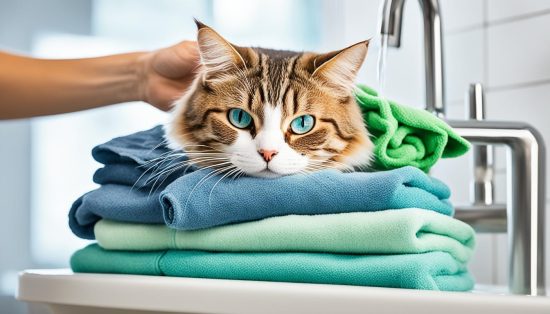Why Do Cats Lick You? Uncovering the Feline Behavior
Discover the intriguing reasons behind feline grooming habits and why do cats lick you with this insightful exploration into their behavior.
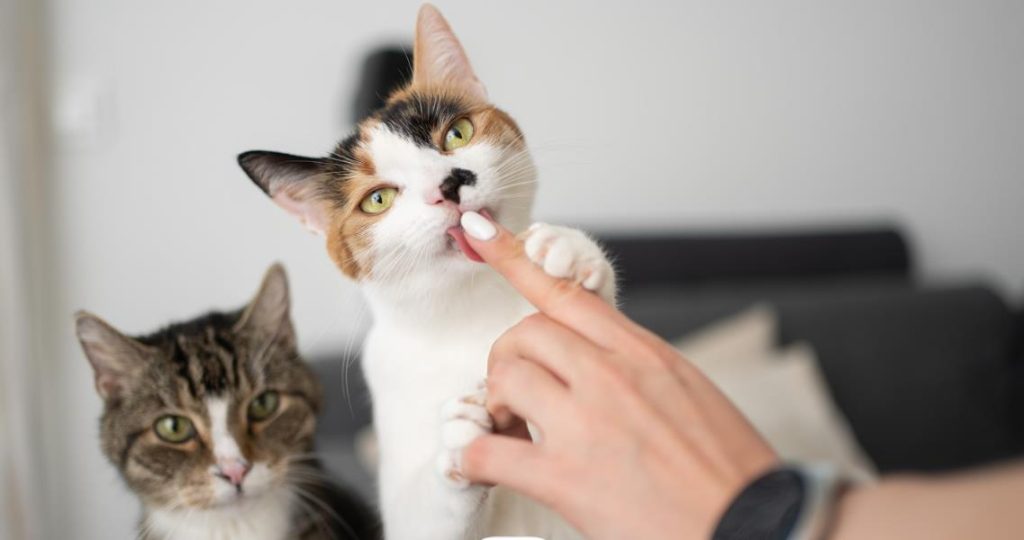
Have you ever wondered why cats lick humans? It’s a behavior that many cat owners are familiar with, but the reasons behind it can be quite intriguing. Is it just a sign of affection or is there something more to it? Uncovering the feline behavior of licking can provide valuable insights into the complex relationship between cats and their human companions.
Throughout this article, we will explore the different motivations behind cat licking, including affection, communication, anxiety, and health concerns. By delving into the depths of feline behavior, we can gain a deeper understanding of why cats lick their owners and how this behavior plays a role in their overall well-being.
So, why do cats lick you? Let’s uncover the mysteries and discover the fascinating world of feline behavior together.
The Grooming Habits of Cats and Their Significance
Cats are known for their meticulous grooming habits. They spend a significant amount of their time grooming themselves, ensuring their fur is clean and well-maintained. However, grooming is not just about hygiene for cats; it serves numerous purposes.
One of the primary reasons for feline grooming behavior is to regulate body temperature. During grooming, cats distribute oils from their skin onto their fur, which helps insulate their bodies from extreme temperatures. Additionally, the act of licking themselves helps to cool down in hot weather.
Grooming also plays a vital role in removing tangles and debris from a cat’s fur. This meticulous cleaning helps prevent matting and keeps their coat in optimal condition. Cats use their rough tongues to detangle and arrange their fur, ensuring it remains soft and sleek.
Furthermore, grooming has social and bonding implications for cats. Cats engage in allogrooming, where they groom each other as a form of social behavior and bonding within their feline groups. By extending their grooming behaviors to humans, cats may be expressing a sense of trust and affection.
Grooming also serves as a way for cats to establish their territory. When cats groom themselves, they leave their scent on their bodies. By grooming humans, cats may be marking them as part of their social group and strengthening the bond between cat and human.
| Purpose of Grooming | Explanation |
|---|---|
| Hygiene | Cats groom themselves to keep their fur clean and free of dirt. |
| Temperature Regulation | Grooming helps cats distribute oils and cool down in hot weather. |
| Tangle and Debris Removal | Grooming allows cats to keep their fur tangle-free and in optimal condition. |
| Social Bonding | Grooming serves as a form of bonding and trust-building between cats and humans. |
| Territory Establishment | Grooming humans may be a way for cats to mark their humans as part of their social group. |
Understanding the significance of grooming habits in cats helps us appreciate the complex behaviors and needs of our feline companions. By acknowledging the multifaceted nature of grooming, we can strengthen our bond with cats and ensure their overall well-being.
Why Do Cats Lick You: Affection and Social Bonds
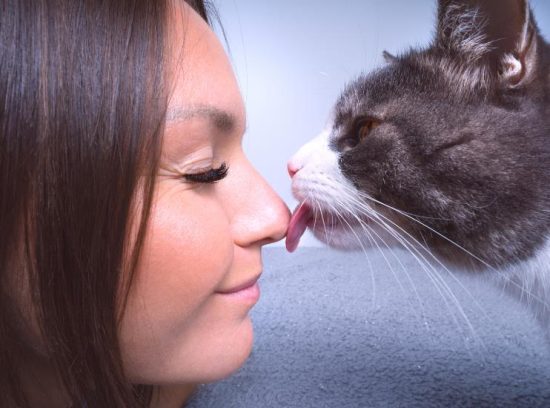
Licking can be a sign of affection in cats, similar to how they groom each other in their social groups. This behavior, known as allogrooming, is a way for cats to bond and show care for one another. When cats lick their owners, they may be extending this behavior as a means of strengthening their bond and expressing their affection. Exploring the connection between licking and allogrooming can provide insight into the emotional connection between cats and their human companions.
The Connection Between Licking and Allogrooming
Allogrooming is a fundamental behavior within a cat’s social group. Cats participate in mutual grooming sessions to form and maintain social bonds. Through allogrooming, cats provide comfort, relieve stress, and establish trust among group members. When cats lick their owners, they may be exhibiting similar behaviors, as they view their human companions as part of their social unit.
This behavior signifies the affection and care that cats have for their owners. Just as cats groom each other, the act of licking acts as a bonding ritual, reinforcing the social connection between cats and humans. This mutual grooming-like behavior serves to strengthen trust, deepen the emotional bond, and create a sense of security for both cats and their human companions.
Licking as a Method of Strengthening Bonds
When cats lick, they engage in an intimate act that goes beyond mere grooming. Cats use licking as a way to communicate their affection, build trust, and strengthen the bond between themselves and their owners. By licking their owners, cats establish a sense of familiarity, security, and belonging.
Through licking, cats convey their love and care, nurturing the emotional connection with their human companions. It is a way for them to show appreciation and strengthen the bond they share. The act of licking releases endorphins in both cats and owners, fostering positive feelings and a sense of closeness.
Understanding the significance of licking in fostering social bonds is crucial for cat owners. Acknowledging and reciprocating this affectionate behavior can lead to a more fulfilling relationship and a happier, healthier cat.
| Benefit of Licking | Description |
|---|---|
| Strengthened bond | Licking reinforces the emotional connection between cats and their owners, solidifying their bond and trust. |
| Mutual comfort | Through licking, both the cat and the owner experience a sense of calmness and relaxation, promoting overall well-being. |
| Enhanced communication | Licking serves as a form of communication, allowing cats to express their affection and provide reassurance to their owners. |
| Positive reinforcement | When owners respond positively to their cats’ licking, it encourages the cat to engage in affectionate behaviors, further strengthening the bond between them. |
Cats Licking for Communication and Territory Marking
Cats have a unique way of communicating with their owners, and licking is one method they use to convey their messages. Licking serves as a form of communication and territory marking for cats, allowing them to establish their presence and mark their owners as part of their territory. When cats lick their owners, they leave behind their scent, which helps create a familiar group scent and a sense of security.
By understanding the role of licking in cat communication and territory marking, cat owners can gain insights into the dynamic between cats and humans. It helps to recognize that when your cat licks you, it is a way for them to express their connection to you and their desire to establish a bond. Cats use their sense of smell to communicate, and by leaving their scent through licking, they reinforce their presence and ownership.
Licking also helps create a safe and secure environment for cats. It helps them establish a group scent that can deter potential intruders and provide a sense of comfort within their territory. By licking their owners, cats not only mark them as part of their territory but also strengthen the bond between them.
Understanding the significance of licking as a form of communication and territory marking in cats can help cat owners better understand and respond to their pets’ needs. It allows for a deeper connection between cats and humans and promotes a harmonious coexistence.
| Benefits of licking for cats | Benefits for cat owners |
|---|---|
| Communication with the owner | Strengthened bond with the cat |
| Territory marking | Enhanced understanding of the cat’s needs |
| Cat’s sense of security | Improved communication and relationship |
The Underlying Anxiety Behind Your Cat’s Licking
Cats may resort to licking as a way to alleviate cat anxiety and stress. This behavior, known as displacement behavior, allows cats to redirect their emotions and find comfort in grooming. When cats experience stress-related licking, it serves as a soothing behavior that can help them cope with anxiety and tension. Licking provides a sense of control and relaxation, allowing cats to self-soothe and manage their anxious feelings.
Identifying anxiety symptoms in cats can be crucial in understanding the underlying causes of excessive licking. Signs of anxiety-related licking may include increased frequency and duration of licking, obsessive grooming in specific areas, and changes in overall feline behavior. It’s important for cat owners to be observant and attentive to such behaviors in order to recognize when their pets may be experiencing anxiety.
Addressing the root causes of feline anxiety is essential to creating a more peaceful and calm environment for your anxious cat. Providing a safe and secure space, enriching their environment with interactive toys and hiding spots, and establishing a predictable routine can help reduce anxiety levels. It’s also beneficial to consult with a veterinarian or animal behaviorist to develop a personalized plan for addressing your cat’s anxiety and managing stress-related licking.
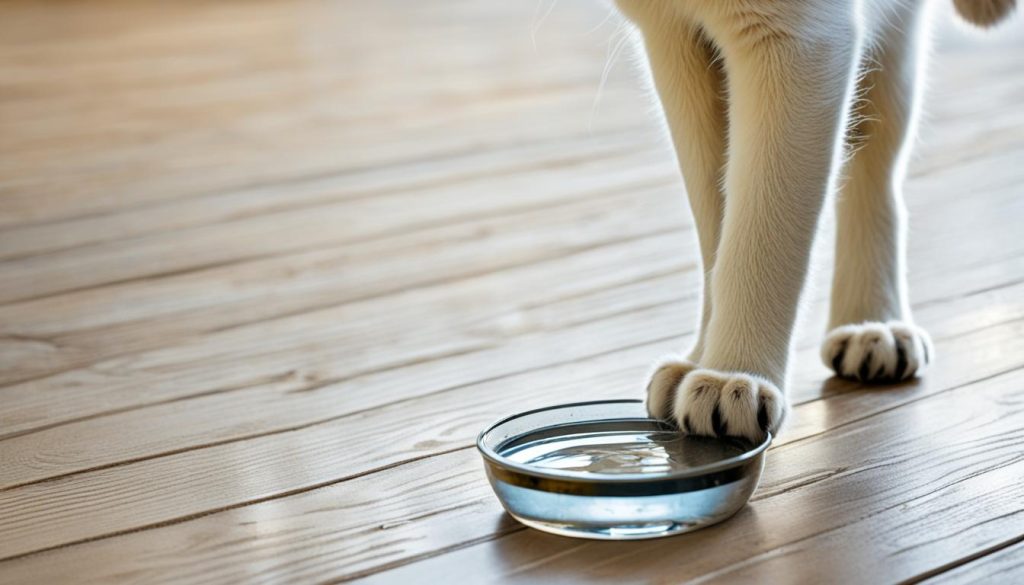
Loving Licks: When Cats Use Licking as Attention-Seeking Behavior
Cats are known for their independent nature, but they also crave attention from their owners. Licking can be a form of attention-seeking behavior, as cats may have learned that licking gets them the desired response from their owners. Understanding why cats use licking to seek attention can help cat owners respond appropriately and provide the necessary affection and interaction to fulfill their pet’s needs.
Licking as a Comfort-Seeking Behavior: Unweaned Kittens and Their Mothers
For unweaned kittens, licking is a deeply ingrained behavior associated with the comfort and care they received from their mothers. Nursing behaviors like licking provide kittens with warmth, nourishment, and a sense of security. This early association between licking and comfort-seeking can have lasting effects throughout a cat’s life.
As kittens mature into adult cats, they may continue to engage in licking as a way to seek comfort and soothe themselves. Kneading and purring often accompany licking in adult cats, further indicating their contentment and desire for emotional reassurance. These behaviors are reminiscent of their nursing experiences as kittens and serve as a source of comfort in times of stress or anxiety.
Nursing Behaviors and Their Impact on Adult Cats
The nursing behaviors that kittens experience during their early development play a significant role in shaping their behavior as adults. Through nursing, kittens establish a strong bond with their mothers, creating a sense of security and comfort. This bond not only fosters physical growth but also allows kittens to develop important social skills and emotional regulation.
| Nursing Behaviors | Impact on Adult Cats |
|---|---|
| Licking | Provides a sense of comfort and security, reminiscent of nursing experiences in early life. |
| Kneading | Stimulates memories of kneading their mother’s mammary glands during nursing, promoting relaxation and contentment. |
| Purring | Replicates the soothing vibrations kittens felt while nursing, serving as a self-soothing mechanism in adult cats. |
Kneading and Purring When Licking as Comfort-Seeking Signs
When cats engage in licking as a comfort-seeking behavior, they often incorporate kneading and purring into their actions. Kneading is the rhythmic motion of pushing their paws in and out against a surface, reminiscent of the kneading action they performed when nursing to stimulate milk flow. This behavior, accompanied by the soothing sound of purring, creates a calming effect for cats, allowing them to find comfort and relaxation.
Observing these signs of comfort-seeking, such as kneading and purring, can provide valuable insights into a cat’s emotional well-being and need for reassurance. By recognizing and responding to these behaviors, cat owners can create an environment that promotes comfort and stability, enhancing the bond between them and their feline companions.
The Attraction to Taste: Why Your Cat May Enjoy Licking You
Have you ever wondered why your cat enjoys licking you? It turns out that the taste and scent of your skin can be irresistible to feline companions. Cats are attracted to the salty nature of human skin, which they find somewhat of a delicacy. Additionally, the interesting scents on your skin or hair can intrigue and entice cats to engage in licking behavior.
While it’s endearing to witness your cat show affection through licking, it’s important to be cautious about allowing them to lick topical products on your skin. Some ingredients commonly found in lotions, creams, or other topical products can be harmful and toxic to cats when ingested through licking. It’s crucial to prioritize their safety and prevent any potential consequences associated with licking such substances.
Salty Skin: A Feline Delicacy?
The attraction to taste can explain why cats gravitate towards licking their humans. Human skin has a slightly salty taste, which can be appealing to cats. This taste preference may stem from their evolutionary background, as cats in the wild often consume prey that contains salty body fluids. So, when your cat licks you, it could be their way of satisfying their natural instinct for taste and indulging in a feline delicacy.
Harmful Consequences of Licking Topical Products and How to Prevent It
Allowing your cat to lick topical products can have detrimental effects on their health. Many skincare and cosmetic products contain ingredients like essential oils, fragrances, or preservatives that could be toxic to cats if ingested. To protect your furry friend, it’s crucial to be mindful of the products you use and ensure they are safe for pets.
To prevent your cat from licking topical products, you can take several precautions:
- Avoid applying products directly to areas where your cat can easily access and lick.
- Wait for the products to fully absorb and dry before allowing your cat near the treated area.
- If necessary, use pet-friendly alternatives or consult with your veterinarian for appropriate recommendations.
By being proactive and mindful of your cat’s safety, you can ensure a happy and healthy bonding experience without compromising their well-being.
| Product Type | Harmful Ingredients | Pet-Friendly Alternatives |
|---|---|---|
| Perfumes/Colognes | Alcohol, artificial fragrances | Pet-safe colognes or unscented alternatives |
| Lotions/Creams | Essential oils, artificial colors | Non-toxic, pet-friendly lotions or creams |
| Medicated Products | Active ingredients harmful to cats | Veterinarian-approved treatments specifically for cats |
When Licking Indicates Health Concerns in Cats
Excessive or obsessive licking can be a sign of underlying health concerns in cats. Cats may lick excessively due to nausea, pain, discomfort, or allergies. It is important for cat owners to recognize the signs of medical issues indicated by excessive licking in order to provide timely care for their pets. If you notice your cat constantly licking a specific area or displaying other abnormal behavior, it is essential to seek veterinary care to diagnose and address any potential health problems.
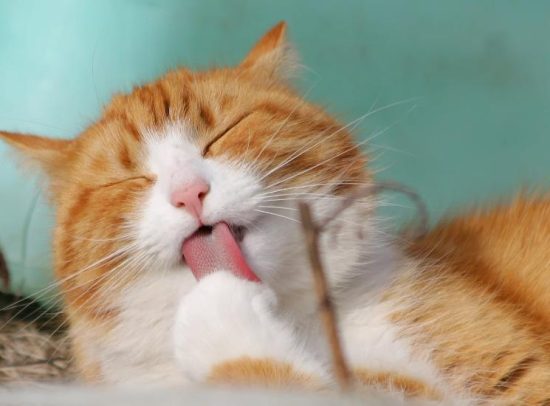
A cat’s tongue has a unique anatomy that plays a crucial role in their grooming habits. One of the key features of a cat’s tongue is the presence of papillae, which are tiny spines that cover the surface of their tongue. These papillae serve multiple purposes and contribute to the effectiveness of feline grooming.
The Functional Role of Papillae in Cats’ Grooming
The papillae on a cat’s tongue serve as specialized grooming tools. They help cats remove dirt, tangles, and loose fur from their coats, keeping their fur clean and well-groomed. The rough texture of the papillae aids in detangling knots and removing debris, ensuring that a cat’s fur remains smooth and tangle-free.
Papillae also assist in distributing natural oils throughout a cat’s fur, which helps to keep their coat healthy and shiny. These oils act as a protective barrier, keeping the fur moisturized and preventing it from becoming dry and brittle.
Why Your Cat’s Lick Feels Rough and Scratchy
When a cat licks you, you may notice that their tongue feels rough and scratchy, almost like sandpaper. This rough texture is a result of the papillae on their tongue. As cats lick, their papillae make contact with your skin, gently scrubbing and massaging it.
The roughness of a cat’s tongue serves a purpose beyond just grooming. It allows them to efficiently remove dirt, parasites, and loose fur from their coats, keeping themselves clean and free from potential irritants. The scratchy sensation you feel when your cat licks you is a consequence of the papillae doing their job.
Understanding the functional role of papillae and why a cat’s lick feels rough can provide insights into the intricacies of feline grooming behavior. By appreciating the unique anatomy of your cat’s tongue, you can better understand their grooming habits and the care they put into keeping themselves and their fur in top condition.
Reshaping Your Cat’s Licking Habit: Strategies for Redirection
If your cat’s licking behavior becomes excessive or unwanted, it’s important to find effective strategies for redirection. Punishing your cat for licking can damage the bond between you and your furry companion. Instead, introduce alternative actions to discourage licking without compromising your relationship.
Alternative Actions to Discourage Licking Without Damaging Your Bond
Redirecting your cat’s attention away from licking requires offering alternative activities that satisfy their natural instincts. Here are some strategies to consider:
- Provide interactive toys: Engage your cat in playtime using toys that encourage hunting behaviors. Toys with feathers, dangling strings, or treat-dispensing features can redirect their focus away from licking.
- Offer scratching posts: Cats often lick as a form of self-soothing, but providing appropriate scratching surfaces can help redirect their behavior. Invest in a sturdy scratching post or cat tree to satisfy their need to scratch and stretch.
- Practice positive reinforcement: Reward your cat with treats, praise, or gentle petting when they engage in behaviors other than licking. Positive reinforcement can help reinforce desired actions and discourage excessive licking.
- Use deterrents: If your cat has specific areas they tend to lick, consider using deterrent sprays or double-sided tape to discourage them. Cats dislike the sticky texture and will be less inclined to lick those areas.
FAQs on why do cats lick you
How does licking contribute to the bond between cats and humans?
Licking, similar to allogrooming among cats, can be a way for cats to show affection and strengthen the bond they share with their owners.
How does licking serve as a form of communication for cats?
Cats use licking as a means to communicate with their owners and mark them as part of their territory, creating a familiar scent and secure environment.
Can licking indicate anxiety in cats?
Yes, cats may resort to licking as a way to relieve stress and anxiety, redirecting their emotions and finding comfort in grooming.
Is licking a form of attention-seeking behavior in cats?
Yes, cats may lick their owners as a way to seek attention and receive the desired response, fulfilling their need for affection and interaction.
Why do unweaned kittens engage in licking behavior?
Unweaned kittens associate licking with the care and nourishment they received from their mothers, using it as a comfort-seeking behavior even in adulthood.
What attracts cats to lick their owners?
Cats may be attracted to the taste or scent of their owners’ skin, particularly the salty nature and the presence of interesting smells.
Can excessive licking indicate underlying health concerns in cats?
Yes, excessive licking can be a sign of medical issues such as nausea, pain, discomfort, or allergies, and it’s important to seek veterinary care if necessary.
Why does a cat’s lick feel rough and scratchy?
A cat’s tongue has tiny spines called papillae, which help remove dirt, tangles, and loose fur from their coats, giving their lick a rough texture.
Are there any risks associated with allowing cats to lick humans?
Cats carry bacteria in their mouths, which can lead to infections, particularly if a cat licks an open wound. It’s important to take precautions, especially for immunocompromised individuals.
How can cat licking habits be redirected?
It’s best to avoid punishment and instead introduce alternative actions to discourage licking. Enrichment activities and play can also help redirect a cat’s focus through positive reinforcement.



